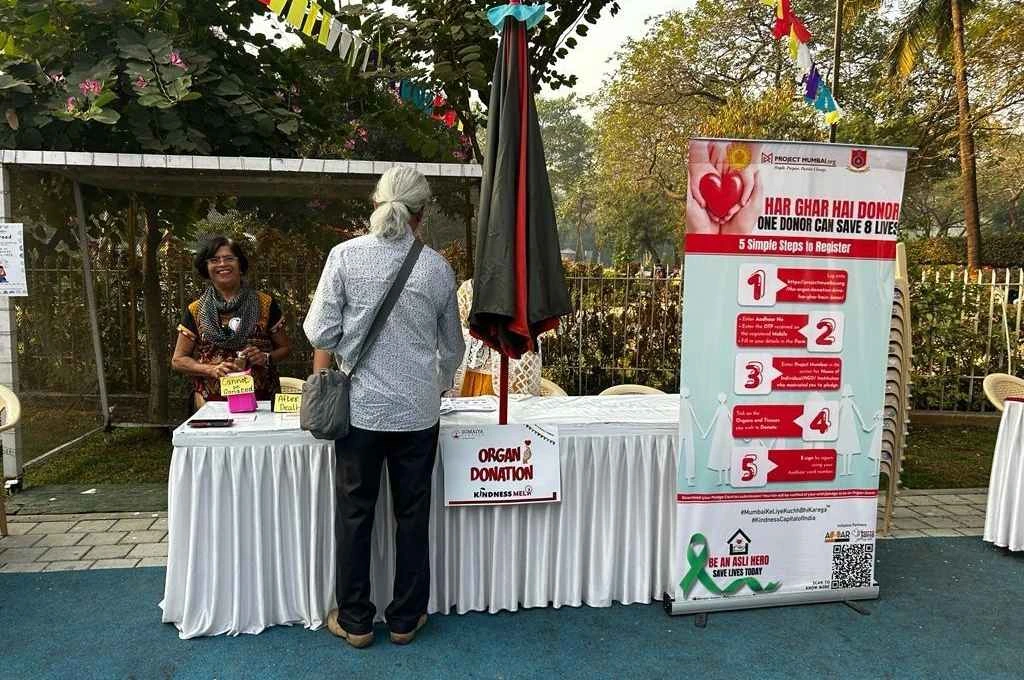Over the course of the last 12 months, we’ve published an article every month on a topic related to mental health and well-being. This series—Centred Self—conceived in partnership with The Wellbeing Project, Stanford Social Innovation Review, Skoll Foundation, and Schwab Foundation at the World Economic Forum aimed to explore the often-overlooked connection between well-being and social change.
And it just so happened that the launch of this series coincided with the onset of the COVID-19 pandemic. As the crisis played out, the conversation around mental health picked up. In many ways, this was a significant step—people across the world started getting comfortable talking about anxiety, depression, and other mental health issues. (Though frequently, the language used in these conversations has been stigmatising and ableist. For example, offering advice on how one can ‘stay sane’ while working from home or not ‘go crazy’ while in quarantine.)
Considering there was already a flurry of news pieces, research reports, and surveys on the impact of COVID-19 on mental health, we wanted to reach out to authors who could shed light on less frequently discussed issues. As a result, our articles highlighted issues that range from supporting well-being within resource-scarce environments to the effect of caste and patriarchy on mental health, to the problem with resilience, self-improvement, and community mental health approaches.
But a year into the pandemic, and for the last piece of this series, we wanted to turn inwards and hold a mirror to our own well-being practices.
Well-being policies, practices, checks, and balances
Before diving into what organisations can do for well-being and mental health, it’s imperative to note that well-being practices are by no means ‘fixes’ for mental health, they are simply tools aimed towards giving team members the space they need to manage and grow.
Neither are they substitutes for fundamental policies and practices that workplaces should have in place, such as fair and adequate compensation, evenly spread workloads, respect for work-life balance, non-discriminatory policies, and more. The absence of these fundamentals has the potential to negatively affect mental health to a greater degree than ancillary well-being practices can help.
That said, here are some principles that we at IDR have tried to follow through our time working from home, that we hope other organisations might find helpful.

1. Internal communication
a. Guidelines for internal communication
When it comes to communicating with colleagues, managers, bosses, or direct reports, it’s important to make note of how we reach out and respond to one another. With various instant messaging apps and email replacing a lot of in-person conversations, we need to figure out which channel to use (for example, email or Slack) and how we position our asks or feedback. A set of guidelines, put together collaboratively, could help team members communicate more smoothly.
Putting guidelines in place and following them can help minimise anxiety or miscommunication and misinterpretation of messages in the absence of being able to gauge verbal tone. (You can see an example of our texting communication guidelines here.) Simple things such as ‘checking in’ to see whether a colleague can work on a task, rather than directing them to work on it, can go a long way.
b. Team-wide therapeutic activities
If resources allow, it’s worth exploring bringing a professional aboard to help navigate how teams can engage in group sharing. A therapist might be well-positioned to help teams share how they are doing and how they think the organisation is doing in a safe, comfortable, and guided manner. Specific tools and activities (for example, using pictograms to help identify emotions) can also be employed to do this. Not only does this give team members an insight into how their colleagues are managing, it could also increase a sense of solidarity and social cohesion within the organisation.
Here, it’s important to note that these sessions can be done in a manner that is affordable for the organisation. For example, our team had two group sessions with a therapist who then gave us the tools to continue checking in with each other in her absence.
2. Breaks and time off
a. Additional leaves
Workplaces around the world have experimented with the four-day work week, and its benefits have been well-documented. In fact, recently, India’s new labour codes have also made provisions for this. For a lot of organisations who typically work five or even six days a week, completely switching over to a four-day week might not be feasible. Still, given the various pressures and responsibilities that come with working from home, we decided to try a four-day week twice every month—giving everyone across the board an additional day off every two weeks.
Having the entire team on leave at the same time eliminates the possibility of people reaching out to you for small things.
As a small organisation (under 15 people), that does not work in the field, and whose work is entirely digital, having these additional leaves was more feasible for us than it might be for others. Still, we do believe there can be a version of extra time off that works for your organisation. For example, in the later months of 2020, we saw a number of organisations carving out a week off as their ‘well-being leave’.
Importantly, having the entire team on leave at the same time eliminates the possibility of people reaching out to you for small things—which may happen when some team members are working and others aren’t—thereby allowing for a complete ‘switch off’ from work.
b. Flexible working hours
From the start of the lockdown, it became evident that everyone’s schedules, roles, and responsibilities at home are unique. While there are of course commonalities between most of our work from home experiences and living situations, family members and household responsibilities heavily influence what someone’s routine might look like. Instating flexible working hours can offer people the freedom to dedicatedly work around their other responsibilities, rather than having to juggle them side-by-side.
In our experience, carving out a chunk of two to three ‘non-negotiable online hours’ helped ensure that the team was together for some part of the day, and communication wasn’t heavily interrupted. Again, as a team whose work is entirely digital, this was easier for us to do.
c. Hard stops for work-related messages
With the blurred boundaries between work and home, establishing—and sometimes maybe even enforcing—rules around work-related messages might be necessary. Particularly when using messaging platforms that double up as social media (WhatsApp, for example), it’s easy for a work message to pop up outside of work hours. A simple rule like ‘No work WhatsApp messages on the group chat between 8PM and 8AM’ could help maintain boundaries. If it’s not urgent, an email can suffice. If it is urgent, a call might be easier.
3. Face time with colleagues
a. Video calls
Canteen conversations, water-cooler exchanges, and informal chai breaks have never been valued this much before. But the lack of casual face time with colleagues has left people missing the social elements of working. Though it seems obvious, even just a five-minute casual conversation before a scheduled work video call could go a long way to help people connect with each other. Zoom fatigue is definitely an issue to be cognisant of, but there are ways to combat this as well. Exploring a mix of keeping video on towards the beginning and end of a call only, or making this an ‘opt-in’ exercise could also help.
b. Team games
It might not be enough to simply get on a video call and chat; sometimes planned activities might be needed to add structure to ‘team bonding’. We’re big proponents of using activities to help us decompress, and you can read about 10 team games that have helped us do exactly that.
c. Well-being check-ins
Following our two sessions with a therapist, the team indicated an interest in having an ongoing conversation on how each person was doing (What resources were we relying on? What practices were we following? What was working, what was not?). To allow for this, we had monthly well-being check-ins, in groups of three to four, guided by the tools our therapist had shared with us.
Finding what’s right for your organisation
In the initial days of the lockdown, our team, like most others, struggled. Our culture and working style relied heavily on in-person communication, our strategy for the year and hiring plans were disrupted, and the seemingly overnight increase in workload was exacerbated by our small team size.
When first confronted with all these changes, we found ourselves succumbing to the pressure and pushing ourselves to work more and work faster. At this time, two activities helped the most: Time spent prioritising organisation workloads and methods created for team members to give us feedback.
Asking the team what they needed gave us the insight to ideate on some of our other practices.
Having the senior leadership team reach an understanding of what work was urgent versus what wasn’t allowed us to then plan our days and weeks, and bring in policies like extra paid time off and flexible work hours. Similarly, asking the team what they needed gave us the insight to ideate on some of our other practices.
Of course, we still have more questions than answers when it comes to building culture at IDR. Our systems, processes, and policies are still being built and refined, and we have a lot to learn. As a media platform that publishes multiple articles a day, we find ourselves needing to be up to date with everything that’s going on in our sector so that we can respond accordingly. Needless to say, this also means that we struggle to find the right balance between work and taking care of ourselves, and we often don’t get it right.
This pandemic and our subsequent shift to working at home shed light on some of our policies that were helpful (for example, having mental health days included within sick days), and gave birth to new ideas and ways of working that we are hoping to carry with us into a post COVID-19 world.
—
Know more
- Read more about how mental health care in the workplace is often replaced with ‘corporate wellness’.
- Explore how COVID-19 might fundamentally alter how we work and where we work from.
- Lean more about the challenges that working from home pose and how to navigate them.






